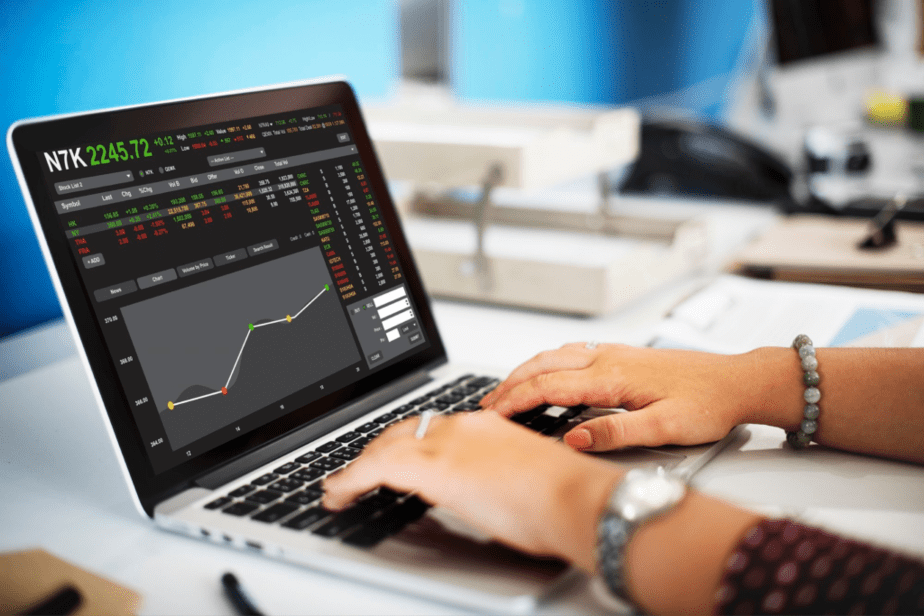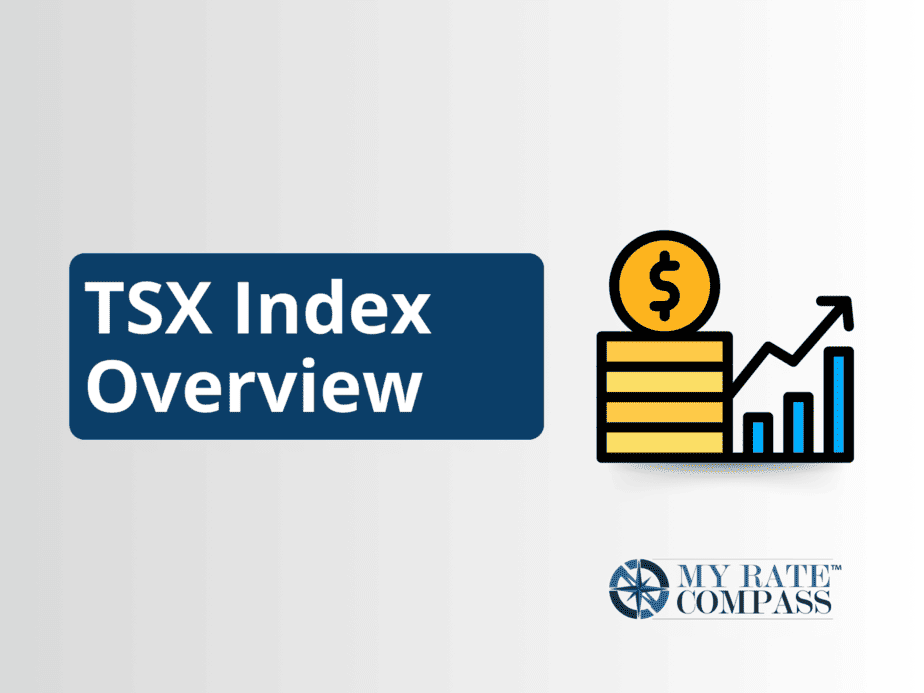RBC, or the Royal Bank of Canada, is one of Canada’s big five banks. RBC Direct Investing is the brokerage division and platform for the bank. Founded in 1864 in Halifax, RBC has a history as a dependable and trustworthy financial institution. This extends to the RBC Direct Investing platform, which is a very safe investing tool for a range of investors. Here we look at RBC Direct Investing with what they offer, the pros and cons of the services and for whom the platform is best suited for.
What is RBC Direct Investing?
RBC Direct Investing is an online trading platform that lets you invest in the following:
- Stocks
- ETFs
- Mutual funds
- Options
- GICs
- Bonds
They also offer research, tips and performance tracking tools allowing you to make informed decisions when investing. They have a flat trading fee, to simplify your spending, but it is high at $9.95. In recent years, they have done a full platform upgrade, making their platform easier to use and adding in useful trading tools. They offer the following types of accounts:
- Registered: Tax Free Savings Accounts (TFSA), Registered Retirement Savings Plans (RRSP), Registered Education Savings Plans (RESP), and Registered Retirement Income Fund (RRIF)
- Locked-in registered: Locked-In Retirement Account (LIRA), Locked-In Retirement Income Fund (LRIF), Life Income Fund (LIF), and Prescribed Retirement Income Fund (PRIF)
- Restricted registered: Restricted Locked-In Savings Plan (RLSP), and Restricted Life Income Fund (RLIF)
- Non-registered: Cash Accounts and Margin Accounts
- Other: Individual/Personal Accounts, Joints Accounts, and Non-Personal/Corporate Accounts
Who is it for?
To open an account, you must be a Canadian resident, at least the age of majority in your province or territory, and hold a valid Social Insurance Number (SIN). Although they advertise they are for anyone, you really should not use this platform as a novice investor. It is better suited to someone with experience, ample cash available to invest and a person comfortable with the idea of self-directed investing.
RBC Direct Investing Pros and Cons
There are many pros for using RBC Direct Investing including:
- Advanced tools and research: All traders have access to RBC Direct Investing Level 2 Real-Time quotes. Traders who make 30 or more trades per month qualify for the Active Trader Program, which gives them access to Level 2 Real-Time quotes on the US markets.
- Risk-free practise accounts: As long as you have a RBC Direct Investing account, all tools are available on risk-free practice accounts. Using a fake account to test out the platform is useful when learning the ropes.
- Straightforward pricing: As mentioned, RBC offers a flat rate of $9.95 per trade, so costs are very transparent. With more than 150 trades per quarter the flat rate drops to $6.95 per trade.
- Automated investment tools: They offer goal setting and automatic investment plans for mutual funds.
- Royal Circle Membership: Get priority service, premium research, and preferred rates when you maintain balances of at least $250,000 on your trading accounts.
- Live phone support: You can speak to a real person beyond business hours between 7am and 8pm, Monday to Friday.
They also have some cons to consider including:
- High fees: The $9.95 fees are higher than many similar services. Also, trading options add an additional $1.25 per contract, on top of the flat fee.
- Fee for ETF purchases: The fee is also applied to ETFs which eats into your profits.
- Aimed at seasoned investors: While RBC does a good job offering inclusive tools and practice accounts for all account holders, the majority of their trading benefits are for seasoned, active traders with existing equity.
- Quarterly fee: You will be charged a $25 maintenance fee each quarter if you have less than $15,000 invested. The platform is better suited for individuals with ample funds to invest.
- Transfer fees: They will only cover up to $200 in transfer fees, if you transfer over $15,000.
RBC Security: Is RBC Direct Investing Safe?
Yes, RBC Direct Investing is a member of the Canadian Investor Protection Fund (CIPF), so your account is covered up to $1 million. They also use encryption to scramble your information during transactions for a completely secure exchange of information.
RBC Direct Investing Platform and App
The RBC Direct Investing platform offers the following features:
- Online, mobile, and desktop platforms; allow you to trade from anywhere
- View all your accounts, holdings, quotes, and dividend information
- Community of investors, with an ability to anonymously view portfolios, and engage in investment topics on community forums
- Analysis tools to help you make real-time informed decisions on investments
- Risk-free practise accounts to learn and grow trading skills
- Customizable investment monitoring, for optimized performance tracking
How does RBC Direct Investing compare with the competition?
RBC has improved their trading platforms significantly in recent years, making them more streamlined and user friendly. Overall, as with the trading platforms of all of Canada’s big banks, RBC Direct Investing has more appeal to the seasoned trader, or those with a sizeable portfolio. RBC Direct Investing does offer free level 2 real-time data to all account holders, this is a huge drawback as even discount online traders can charge approximately $80 per month for Level 2 data.
They also have risk-free practice accounts to learn about markets, trading, and their investing platform. Risk-free practice accounts and free level 2 market data may make RBC Direct Investing a more appealing choice for new traders. Scotia iTrade is the most competitive trading platform of the all big banks as it offers practice accounts as well. Scotia iTrade also offers bonuses for young investors that RBC Direct Investing seems to be lacking. While RBC Direct Investing may be a better platform for the seasoned investor, they do have some great educational features for new investors.
RBC Direct Investing FAQs
What are the benefits to owning stocks?
Though stock are volatile and considered high risk, they have huge long-term growth and return on investment potentials, when compared to cash and other investments. Stocks also open the doorway to dividend and capital gains, which are passive income streams.
Should I open a TFSA or RRSP?
TFSAs and RRSPs each have benefits and drawbacks to consider. Most Canadians begin their savings journey with a TFSA. Once the contribution limit is achieved, Canadians usually begin contributing to their RRSPs.
TFSAs are a lot more flexible than RRSPs. You can deposit and withdraw funds into a TFSA without tax consequences. In addition, investment earnings in a TFSA are tax-free. The main thing to consider is the contribution limits as penalties for going over can be expensive. With a RRSP, contributions are tax-deductible and investment earnings are tax-free, but you won’t be able to access those funds again without facing harsh tax consequences or until you’re in retirement.
How to open an account?
It is a quite simple online process. Complete an application online and RBC will take approximately 24 hours to process your new account. They will email you when your account is ready.
Any ways to save on costs?
The best way to save on costs with RBC is to actively trade each month/quarter and to hold a minimum trading balance of at least $15,000. With more than 150 trades per quarter, the flat rate drops to $6.95 per trade. With 30 trades per month, you become an Active Trade Member. With a minimum balance of $15,000, there is no $25 per quarter maintenance fees.




